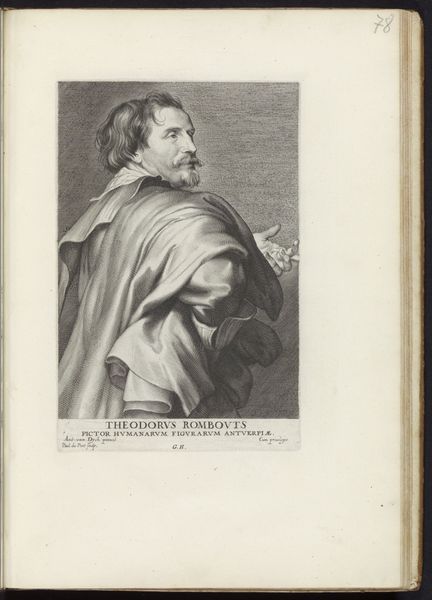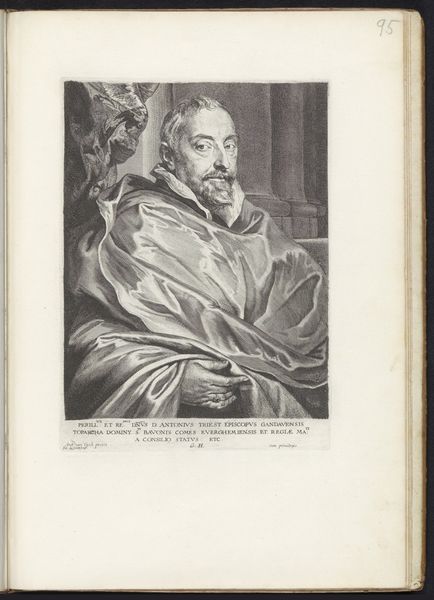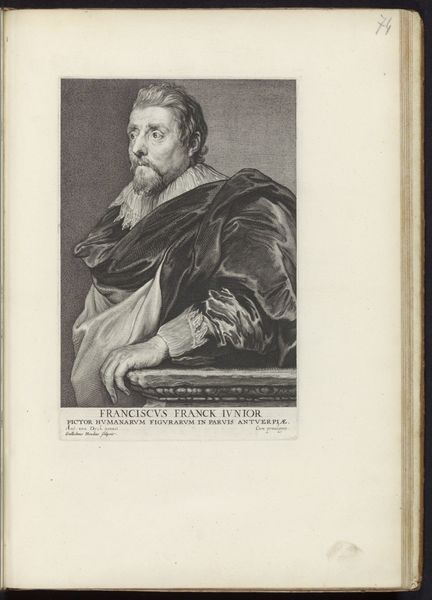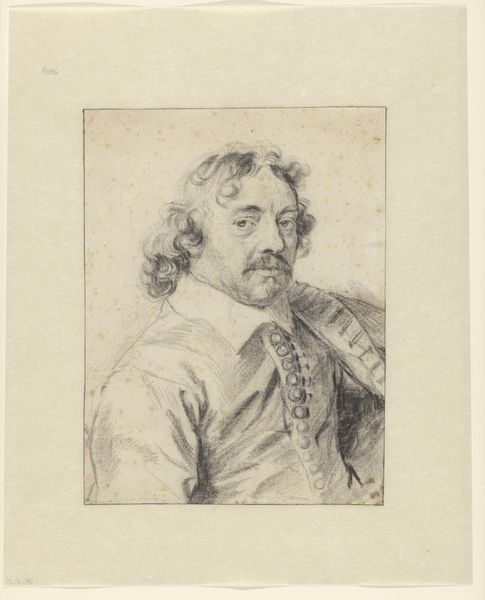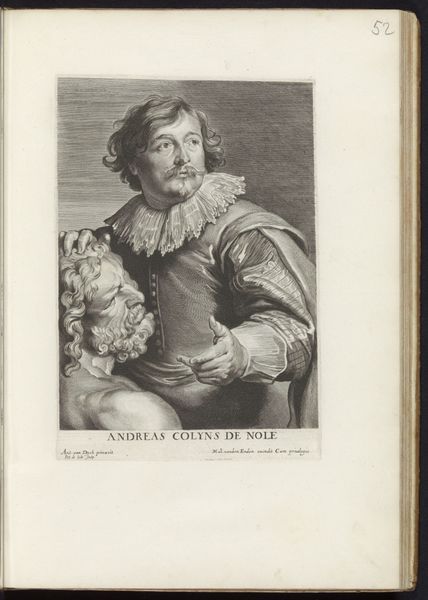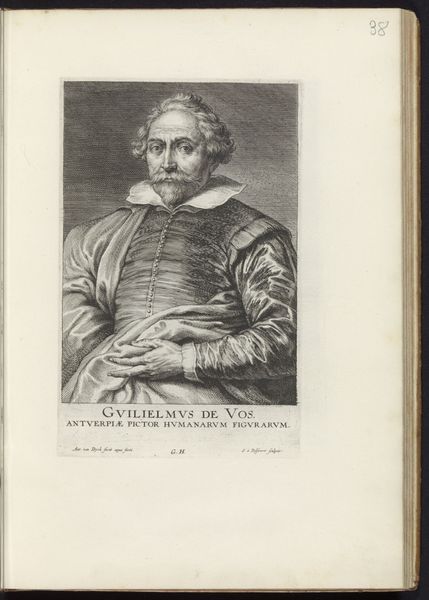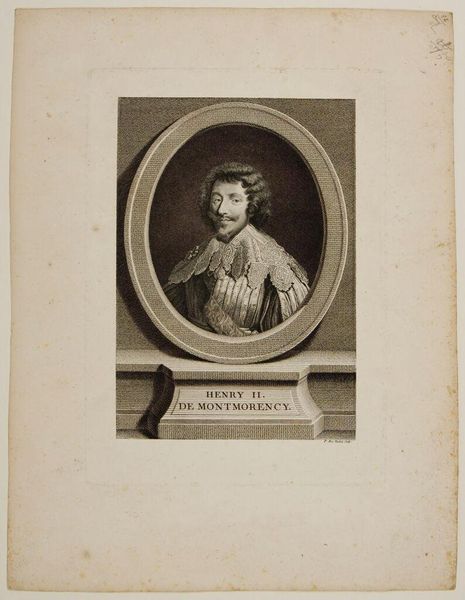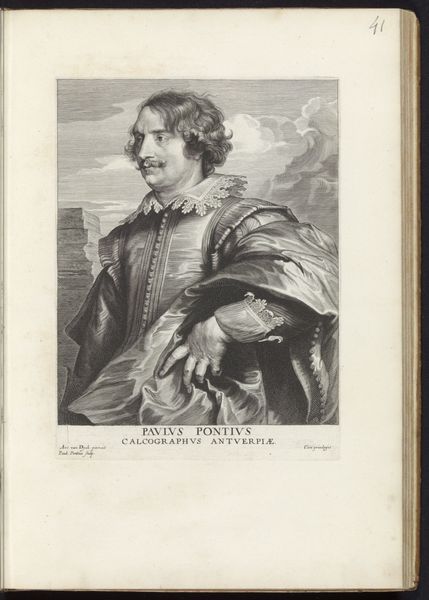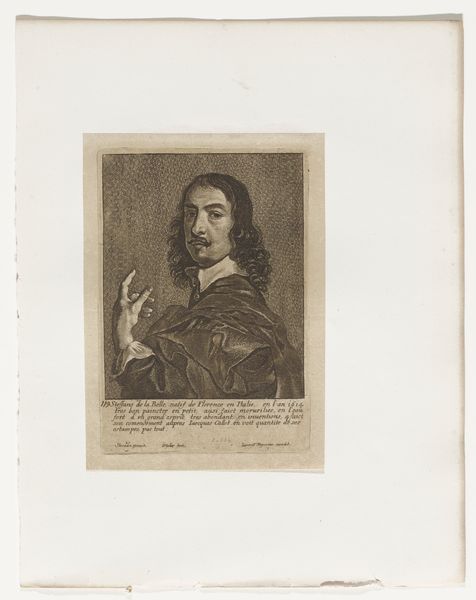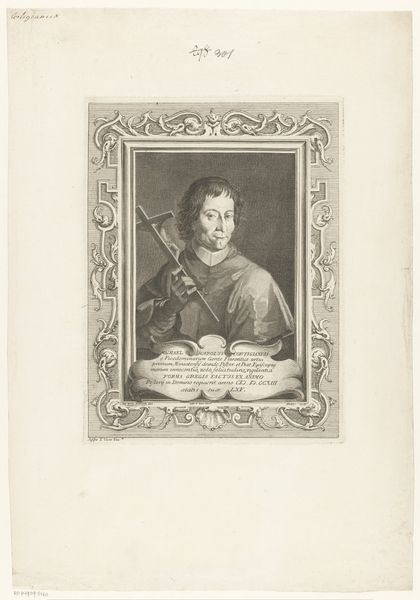
print, engraving
#
portrait
#
aged paper
#
toned paper
#
light pencil work
#
baroque
# print
#
old engraving style
#
personal sketchbook
#
history-painting
#
engraving
Dimensions: height 248 mm, width 183 mm
Copyright: Rijks Museum: Open Domain
Editor: This engraving, "Portret van Cesare Alessandro Scaglia," possibly from between 1630 and 1646, is quite striking. Created by Paulus Pontius, there's something about the detail achieved through the engraving process itself that's impressive. How do you read this work, particularly considering the materials used and their cultural context? Curator: I see this engraving as a product of its time, deeply rooted in the socio-economic structures that enabled its production. The aged and toned paper, along with the engraving technique, tells us a lot about the labour involved in creating multiple images. Consider the copperplate, the skill of the engraver, and the role this print played in disseminating images of power. Editor: That's interesting. So, you're emphasizing the means of production over, say, the sitter's identity or the artistry on display? Curator: Not exclusively, but significantly. While it is indeed a portrait of Cesare Alessandro Scaglia, consider the economic transactions facilitated through these printed images. Prints like these served a purpose beyond mere aesthetics; they acted as a form of currency in a way, reproducing and distributing power, literally transferring wealth and prestige to a wider audience through material culture. The labour and material afford a perspective into society, don’t you think? Editor: I do now. I was initially focused on it as an artistic object. I had not even considered the societal functions of reproducing images in multiples and how prints support the social environment where people could build, transfer, and accumulate wealth, by recording images that become themselves tradable commodities. Curator: Precisely. By viewing art through the lens of its production and consumption, we unlock a deeper understanding of its role within a given society.
Comments
No comments
Be the first to comment and join the conversation on the ultimate creative platform.

